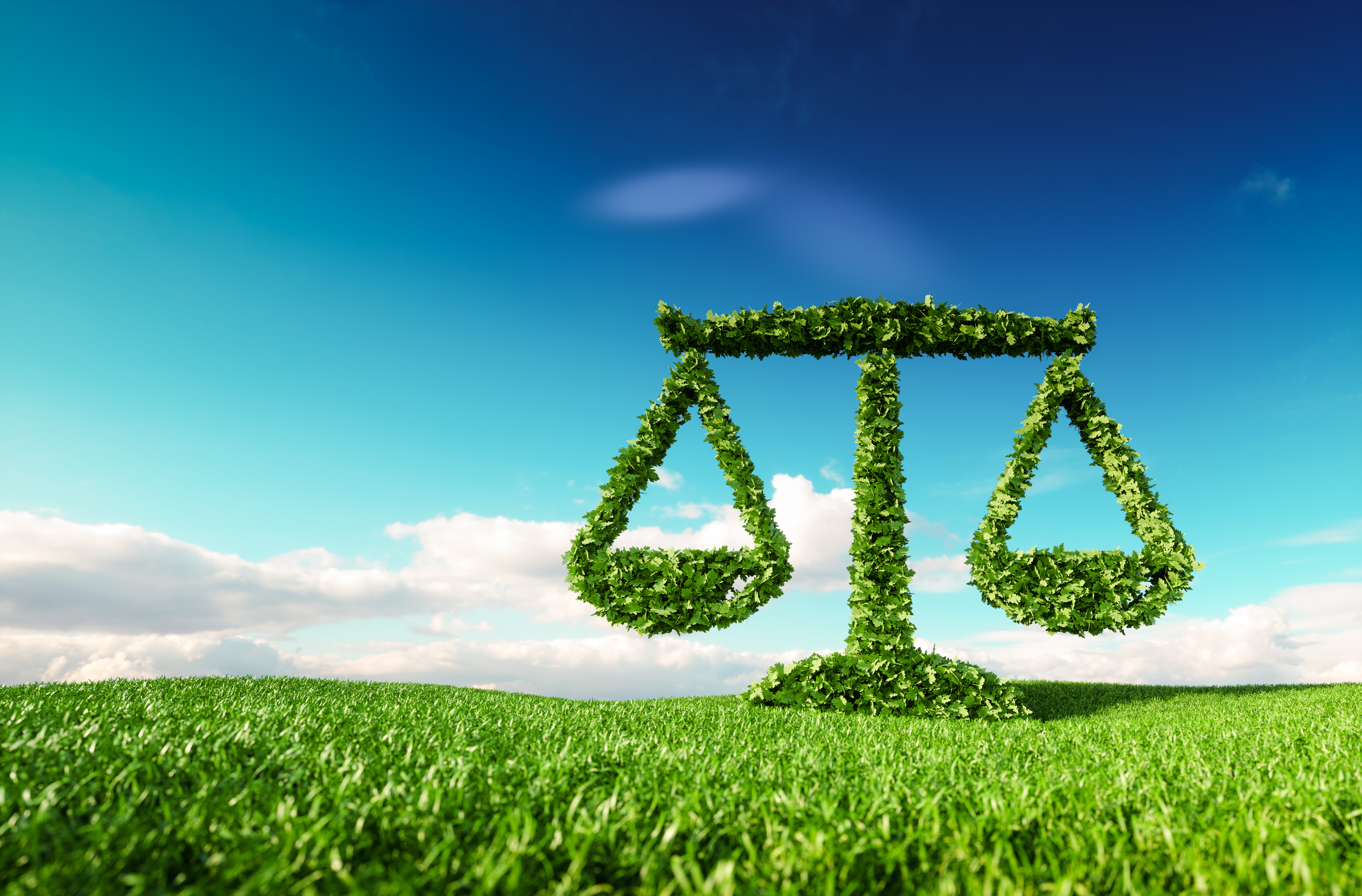What Is Environmental Litigation?

Protecting our environment and preserving the delicate balance of nature have become paramount in the face of mounting environmental challenges. As industrial activities, pollution incidents, and natural resource exploitation continue, environmental litigation is crucial to safeguard our planet's well-being.
In the United States, the pursuit of environmental justice has seen a significant rise in recent years, with 1,387 cases filed in 2021 alone. These lawsuits play a pivotal role in holding responsible parties accountable and advocating for sustainable practices.
By exploring the fundamentals of environmental litigation, we can gain insight into the profound impact these legal battles have on shaping a more sustainable and ecologically responsible future for all.
Environmental Law Issues
Whether combating climate change and regulating pollution, conserving biodiversity, or ensuring environmental justice, these environmental law issues contribute greatly to shaping a cleaner, healthier, and more sustainable future.
Pollution Control
Pollution control is a critical aspect of environmental law that focuses on mitigating and reducing the release of harmful pollutants into the environment. It involves implementing regulations and measures to protect air, water, and soil quality, as well as the health and well-being of human populations and ecosystems.
For example, in the United States, governments limit the amount of pollutants that industries and vehicles can release into the air. These limits are called emission standards and help reduce pollutants like sulfur dioxide, nitrogen oxides, particulate matter, and volatile organic compounds.
Conservation of Natural Resources
Environmental laws often address the preservation and sustainable use of natural resources such as forests, wildlife, oceans, and minerals. The goal is to ensure that these resources are preserved for future generations and that they are used in a manner that minimizes negative environmental impacts.
Take Marine Protected Areas, for example. Environmental laws establish these areas to conserve marine ecosystems, biodiversity, and fishery resources. Similarly, the Forest Service enforces forest conservation laws to protect these areas from deforestation and illegal logging.
Biodiversity and Wildlife Protection
Biodiversity and wildlife protection are crucial components of environmental law that focus on conserving the vast species and ecosystems that comprise our planet's biological diversity. These areas of environmental law aim to safeguard the delicate balance of ecosystems, protect endangered species, and promote sustainable practices to ensure the survival and well-being of wildlife.
To illustrate, the Endangered Species Act identifies and protects species that are threatened or at risk of extinction. These laws provide various levels of protection, including habitat preservation, restrictions on trade, and conservation programs.
Climate Change and Greenhouse Gas Regulations
Given the global impact of climate change, environmental law increasingly deals with regulations related to greenhouse gas emissions, carbon trading, renewable energy incentives, and international climate agreements.
In particular, many countries have set specific targets for reducing greenhouse gas emissions within certain time frames. These targets may be based on the country’s historical emissions, its contribution to global emissions, or scientific recommendations to limit global warming to a certain degree.
Air Quality Regulation
Air pollution can severely affect respiratory health, contribute to climate change, and harm ecosystems. Air quality regulation involves setting standards and implementing measures to monitor and mitigate the emissions of pollutants from various sources.
For example, governments set ambient air quality standards defining acceptable levels of outdoor air pollutants. These standards often include limits for particulate matter, nitrogen dioxide, sulfur dioxide, ozone, carbon monoxide, and lead. Compliance with these standards is crucial to ensure that the air people breathe is safe and healthy.
Water Rights and Management
Water is a finite and essential resource, and its sustainable management is vital for ecological balance, human consumption, agriculture, and industry purposes. Water rights and management encompasses the legal framework and practices governing water resource allocation, use, and protection.
In many legal systems, water rights are based on the concept of riparianism, where those who own the land adjacent to a water body have the right to use the water for reasonable and beneficial purposes. Other environmental laws may promote water-saving practices and technologies to improve water use efficiency and reduce wastage.
Renewable Energy and Sustainability
Renewable energy and sustainability are interconnected concepts within environmental law, focusing on promoting and adopting clean, renewable energy sources to reduce greenhouse gas emissions and foster long-term environmental and economic sustainability.
For example, some regions in the United States have established Renewable Portfolio Standards, which mandate that a certain percentage of electricity generation must come from renewable resources. These standards help drive the adoption of renewable energy technologies nationwide.
Hazardous Substances and Waste Management
Hazardous substances and waste management are vital components of environmental law that focus on regulating the handling, transport, disposal, and cleanup of hazardous materials to prevent harm to human health and the environment.
While they are interconnected under environmental law and regulations, these two terms have different connotations. Hazardous substances are materials that, if not appropriately managed, can pose significant risks to living organisms and ecosystems. Waste management, on the other hand, encompasses the proper treatment and disposal of waste, including hazardous waste, to minimize environmental contamination and protect public health.
However, this is also a global issue. International treaties and agreements, such as the Basel Convention on the Control of Transboundary Movements of Hazardous Wastes and Their Disposal, aim to control the transboundary movement of hazardous waste and prevent its dumping in developing countries.
Environmental Regulation Enforcement
Environmental enforcement encompasses various legal actions that can be taken to uphold environmental regulations, protect natural resources, and hold individuals or entities accountable for violating environmental laws. This can include:
Monitoring and Compliance Inspections: Government agencies responsible for environmental protection regularly conduct inspections to ensure that businesses and facilities adhere to environmental regulations.
Issuing Citations and Fines: Environmental enforcement agencies may issue citations and impose fines for non-compliance when violations are identified.
Civil and Criminal Prosecution: Depending on the severity of the violation, environmental enforcement can lead to civil or criminal prosecution, with potential fines, penalties, or imprisonment for severe offenses.
Environmental Justice
By definition, environmental justice addresses the fair distribution of environmental benefits and burdens among different communities, particularly considering the disproportionate impacts of environmental hazards on marginalized and vulnerable populations. Environmental justice ensures that all individuals, regardless of race, ethnicity, income, or location, have equal access to a clean and healthy environment and are not unfairly burdened by environmental hazards.
The United States Environmental Protection Agency (EPA) collaborates with entities like the International Human Rights and Rights of Indigenous People and the National Environment Justice Advisory Council to ensure that specific environmental justice standards are met nationwide.
How To File an Environmental Lawsuit
Filing an environmental lawsuit requires careful preparation and adherence to legal procedures. From gathering evidence to serving the complaint, each step is crucial for a successful case.
1. Consult an Attorney
First, consult an attorney experienced in environmental law. They can assess the merits of your case and help you determine if you have a valid claim and what legal strategies may be most effective for your particular situation. Your attorney can also assist with the remaining steps you'll need to take to file the lawsuit.
2. Gather Evidence
Collect evidence to support your claims, such as documentation, photographs, expert reports, witness statements, and any relevant environmental data. Your attorney will work with you to ensure that the evidence you gather complies with legal requirements and is admissible in court.
Once you’ve collected all of your evidence, take the time to properly organize and catalog each piece to facilitate ease of access and retrieval during the legal proceedings.
3. Identify the Responsible Parties
Identify the entities responsible for causing or contributing to environmental damage, such as corporations, individuals, or government bodies. Conduct a site assessment or investigation to determine the sources of environmental pollution. This often involves reviewing historical records, conducting on-site inspections, and analyzing available data.
Then, identify the entities that may be legally responsible for the environmental issue based on their compliance with environmental regulations and permits. Companies and industries typically require permits to operate, and violations of these permits may indicate responsibility.
4. Comply with Legal Requirements
Complying with legal requirements is a fundamental aspect of filing an environmental lawsuit, as it ensures that the case is properly filed, follows the necessary procedures, and meets all relevant deadlines. Failure to comply with these legal requirements can result in the dismissal of the case or other procedural requirements.
A well-qualified lawyer will help ensure your lawsuit is filed with the appropriate court within the statute of limitations and confirm that you have the standing to sue.
5. Draft the Complaint
Work with your attorney to draft the complaint, the legal document outlining your claims, the harm suffered, and the relief you seek. This will serve as the foundation of the lawsuit, providing the court and the defendant with a clear understanding of your case and the relief you're seeking. Use clear and precise language to represent your case, and avoid unnecessary jargon or technical terms that might be confusing.
After drafting the complaint, serve a copy to the defendant according to the proper legal procedures for service of process.
6. File the Lawsuit
Submit the complaint to the appropriate court with jurisdiction over environmental cases. This will mark the official beginning of the lawsuit and formally notify the defendant of the allegations against them.
When filing the complaint, you will likely encounter filing fees. These can vary depending on the court's jurisdiction, and some courts may provide fee waivers for plaintiffs who cannot afford these additional costs.
After the lawsuit is filed, the litigation process will begin. This involves discovery, motions, hearings, and a trial if the case is not resolved through settlement or other means.
Potential Outcomes of Environmental Lawsuits
The potential outcomes of an environmental lawsuit can vary depending on the specific case, the evidence presented, and how the legal argument is made. Here are some common outcomes of an environmental lawsuit.
Injunctive Relief
The court may issue an injunction, ordering the defendant to stop specific activities causing environmental harm or violating environmental regulations.
Environmental Cleanup or Restoration
If the lawsuit involves environmental contamination, the court may order the responsible party to undertake cleanup and remediation efforts to restore the affected area.
Monetary Damages
The plaintiff may be awarded monetary compensation for damages suffered as a result of the environmental harm, such as property devaluation or health impacts.
Civil Penalties
The court may impose civil penalties on the defendant for violating environmental laws or regulations, with the fines intended to deter future violations.
Compliance with Regulations
The court may require the defendant to comply with environmental laws and obtain necessary permits or approvals for their activities.
Public Disclosure
Environmental lawsuits can sometimes lead to public disclosure of relevant information and ecological data, raising awareness and increasing transparency.
Environmental Policy Changes
Successful environmental lawsuits can influence policy changes and strengthen environmental regulations and protections.
Settlement Agreements
Often, environmental lawsuits are resolved through settlement agreements, where the parties reach a negotiated resolution that addresses the environmental issues and provides for specific actions or compensation.
Precedent-setting Impact
Landmark environmental cases can set legal precedents that influence future environmental litigation and shape environmental law and policy.
How To Find an Environmental Litigation Attorney
While getting results from a simple online search is possible, consulting our lawyer directory is a guaranteed way to find a reputable lawyer specializing in environmental law with proven results. After all, finding an environmental litigation attorney with a strong reputation and qualifications is essential for a successful environmental lawsuit.
Expertise.com’s directory allows you to find attorneys based on practice area, location, and client reviews. The attorneys listed undergo a thorough vetting process, and each profile provides detailed information about their experience and credentials, ensuring you hire a lawyer you can trust.
Expertise.com StaffAuthor
Step into the world of Expertise.com, your go-to hub for credible insights. We don't take accuracy lightly around here. Our squad of expert reviewers, each a maestro in their field, has given the green light to every single article you'll find. From rigorous fact-checking to meticulous evaluations of service providers, we've got it all covered. So feel free to dive in and explore. The information you'll uncover has been stamped with the seal of approval by our top-notch experts.


![Mass Tort Lawsuit Timelines and Outcomes: What To Expect [2023] DUP IMAGE](https://images.ctfassets.net/k00sbju4hbzq/2sJ6vpBxbkuRa0riSN98dm/34b0353b8eff400e185a2ad51f27b1a1/Depositphotos_226254218_XL.jpg?fit=fill&w=384&q=75)

